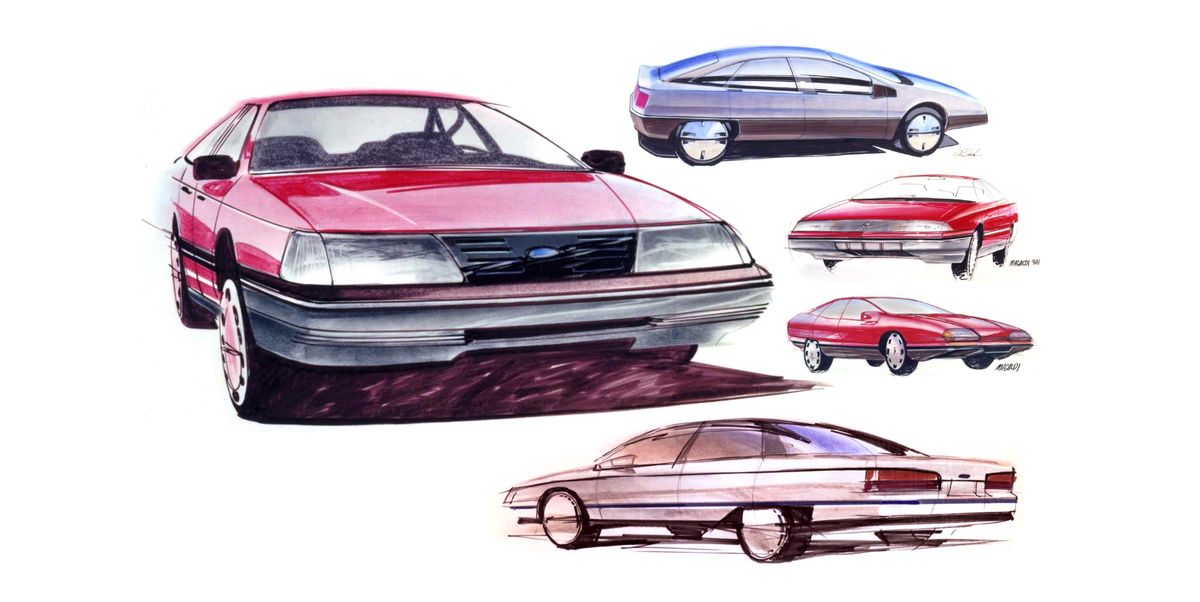The Ford Taurus That Didn't Make It

From the June 2022 issue of Car and Driver.
Reducing drag, increasing innovation, and improving quality were primary considerations in conceptualizing the Taurus, as was proving to consumers that Ford was breaking away from the cars of the Malaise Era. To achieve these goals, the project got a dedicated crew of designers, engineers, and marketers all working together. “The car was developed by one team, Team Taurus, from start to finish. This gave the product a cohesive look and feel from inside out,” says Jamie Myler, Ford’s senior research archivist. That this concept was novel should communicate something about Detroit’s failings during that period.
The group journeyed into the windmills of their minds and came up with designs inspired by neo-futurist visionaries like Syd Mead, production-design lead for Blade Runner. “The focus on drag coefficient required a tighter look, with less overhang of the bumpers, less empty space in the wheel wells, and doors that wrapped above the roof,” Myler says.
Designers eventually arrived at a wind-cheating hatchback form with a teardrop shape. In fact, all early Taurus concepts were hatches or wagons, evolving from Giugiaro-esque knife-edginess to hatchback blobs. A sedan was introduced to give the car a more traditional appearance, and in 1981, designers mocked up a full-size clay model of a Taurus hatchback (platform code: DN5). Engineering concerns about the hatch’s negative impact on structural rigidity derailed the design.
“I think the early design themes that had the hatch would have been interesting,” Myler posits. Imagine one of the slippery outré designs equipped with the Taurus SHO’s 220-hp V-6 and five-speed. It could have easily been a prescient competitor to today’s performance “four-door coupes” such as the Audi RS7 or the Tesla Model S.
Still, the vehicle that Ford settled on pushed domestic design far enough forward that the Taurus stood in as a futuristic car in RoboCop and Back to the Future Part II. It also aged relatively gracefully. “The revolutionary design was a bit jarring to some,” Myler says. “But the fact that it wasn’t [entirely] redesigned for a decade speaks to the popularity.”
Just Say No
This 1981 hatchback proposal for the first Taurus (below) wasn’t chosen, but the aerodynamic shape and the doors that wrap into the roof made it to production. The Mercury Sable got the prototype’s skirted fenders, and the taillights inspired the 1988-1/2 Escort’s.
Ford
This content is created and maintained by a third party, and imported onto this page to help users provide their email addresses. You may be able to find more information about this and similar content at piano.io



